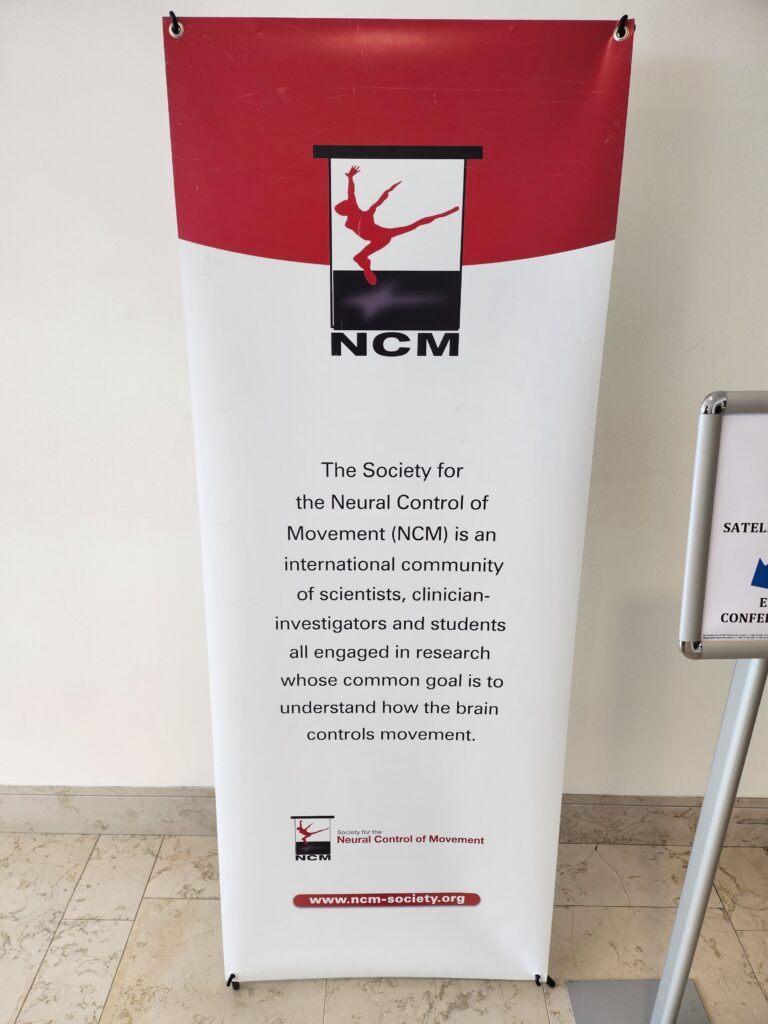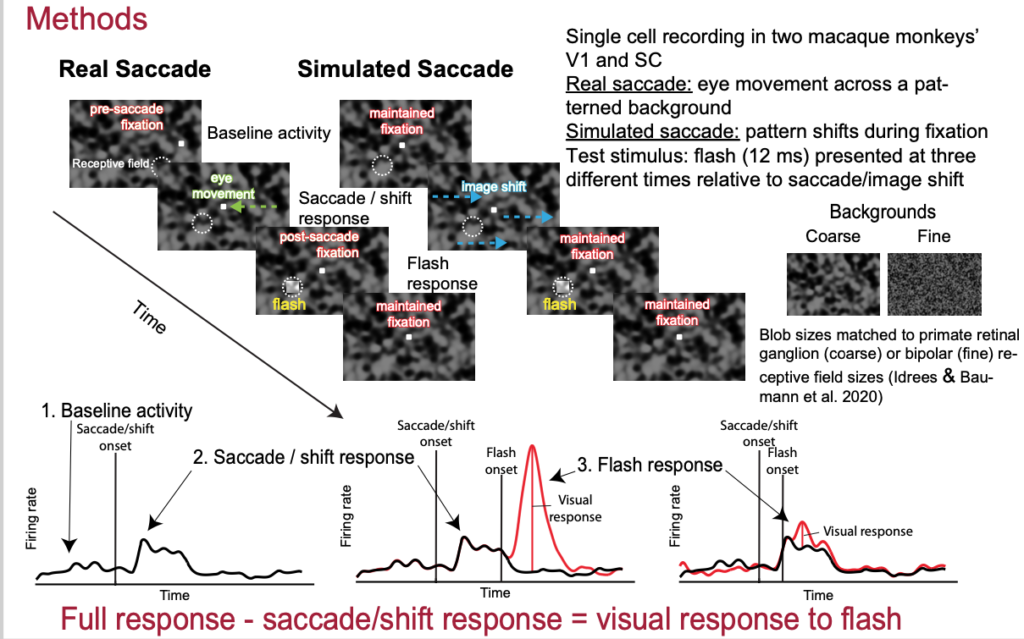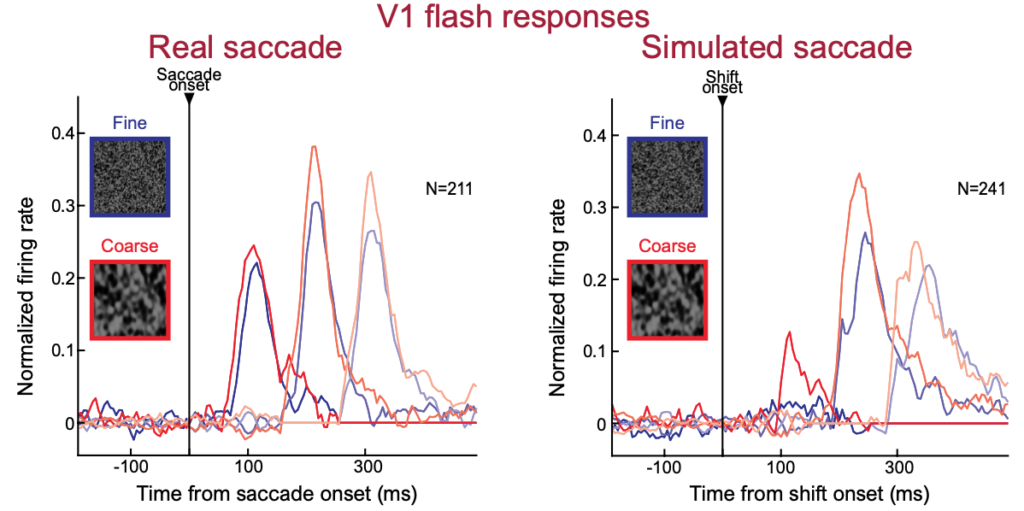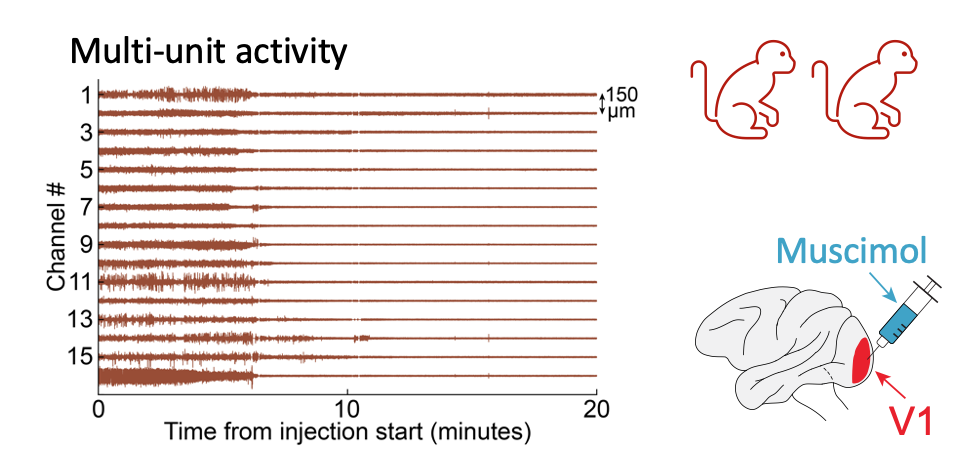
Our lab participated in this year’s Annual Meeting of the Neural Control of Movement (NCM) Society, which took place in Dubrovnik, Croatia.
The NCM meeting covers all aspects of movement control, including eye movement control, which we love to look at very deeply.

Our lab had two important presentations about our work at the meeting.
In the first presentation, Matthias presented a poster about the visual consequences of saccades. He used real eye movements and simulated image shifts to investigate how visual sensitivity is affected in the primary visual cortex (V1) and superior colliculus (SC) by saccades. He found that both areas experience so-called saccadic suppression. Remarkably, in both areas, the suppression was stronger with simulated than with real saccades. This is a direct correlate of our earlier observations attributing a strong visual component to the phenomenon of saccadic suppression.
Another remarkable observation in Matthias’ results was that saccadic suppression and its dependencies on visual images seem to be stronger, and more similar to perception, in the SC than in V1, which is consistent with some of our earlier results.


In our second presentation at the meeting, Tanya gave an outstanding talk about the different roles of anatomical visual pathways from the retina to the oculomotor system. She asked what it takes to transform an image of an object on the retina into an eye movement command, and she particularly asked why there might be alternative anatomical pathways in our brain, bypassing the primary geniculostriate one going through V1. She used the robust phenomenon of saccadic inhibition, which we studied extensively in the past, and she used reversible focal inactivation of V1 to see the roles of alternative anatomical pathways in mediating a most reflexive of eye movement phenomena.
In her work, she made a major discovery about the role of multi-sensory information in activating alternative visual pathways, which we hope to publish soon!


The meeting itself was also very informative and interesting. There were presentations about brain-computer interfaces, rehabilitation, and speech prosthetics.
The career achievement award was given to Eberhard Fetz, who presented a long and impressive career of outstanding research discoveries.



